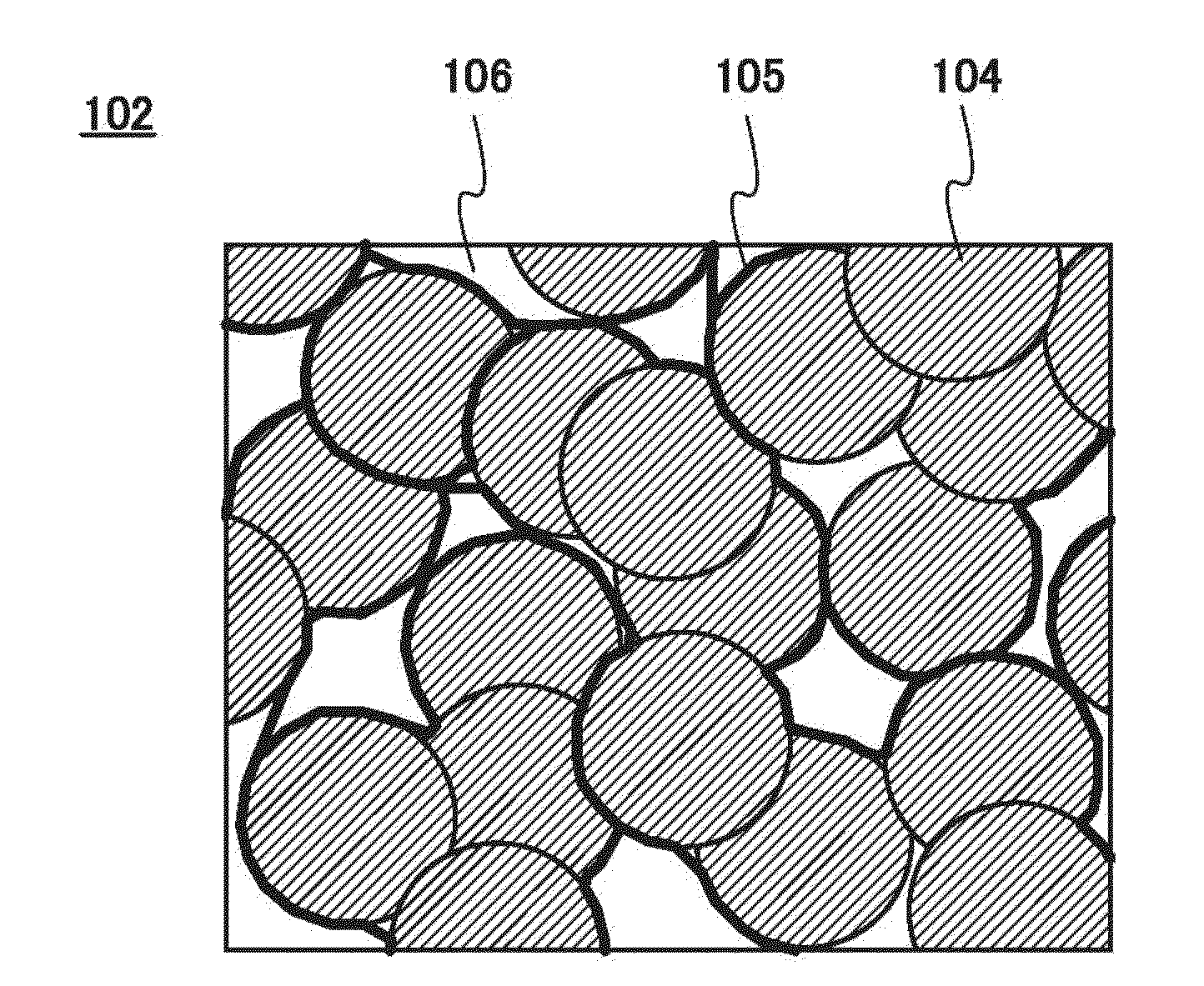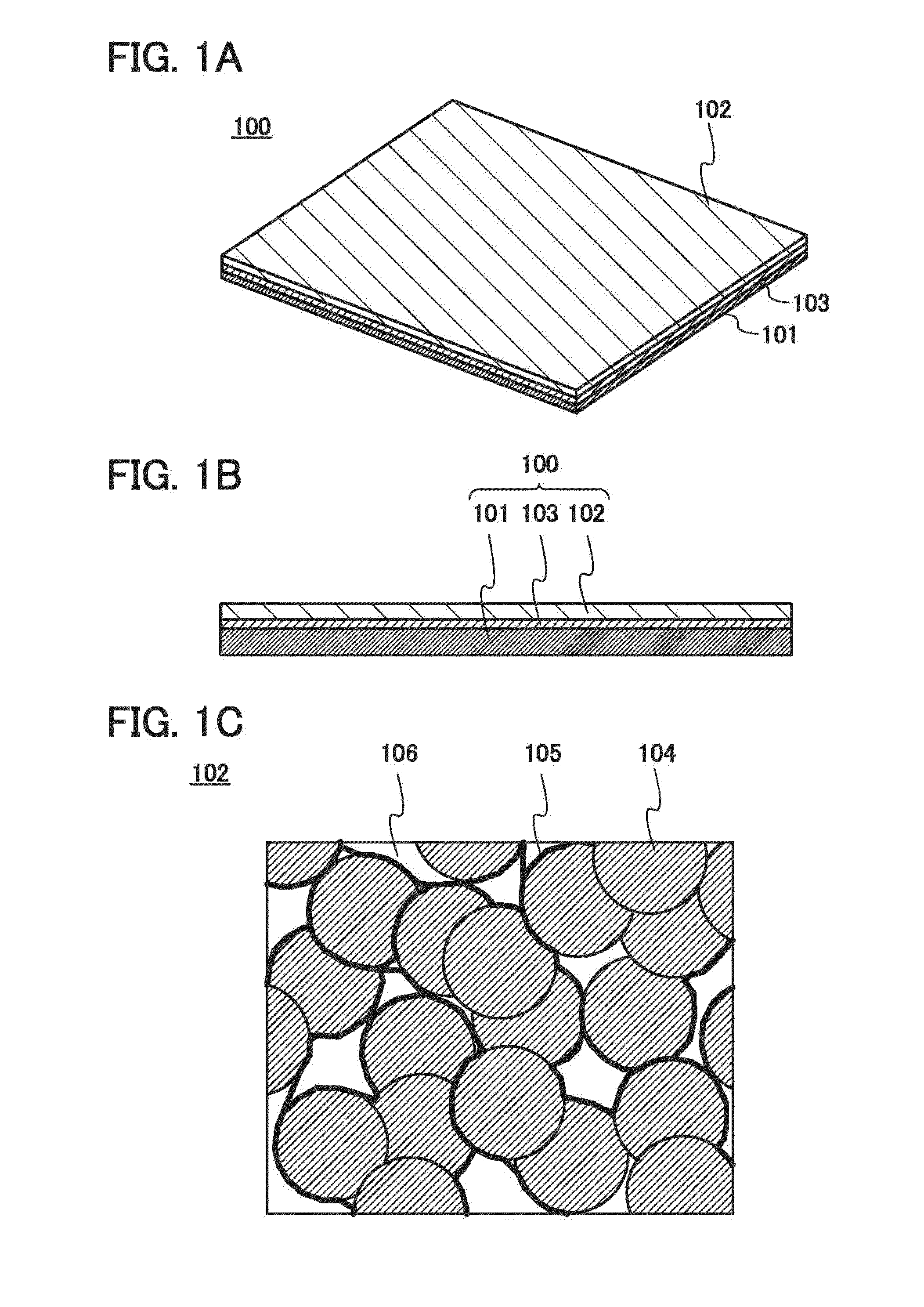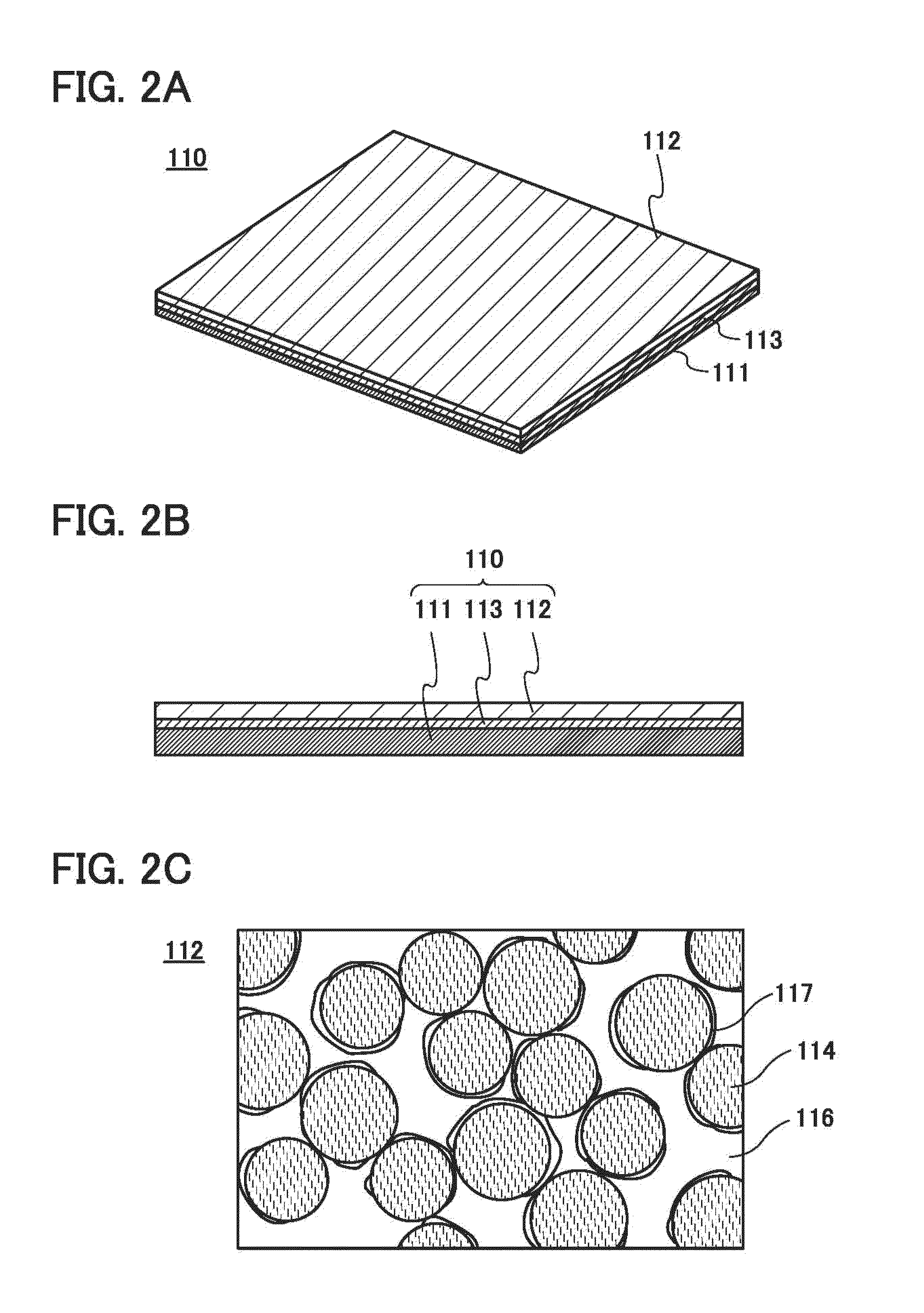Electrode for storage battery
a technology of electrodes and batteries, applied in the direction of non-metal conductors, cell components, conductors, etc., can solve the problems of reducing the potential or capacity of batteries, difficult surface contact, and path with low resistance, and achieve the effect of high capacity
- Summary
- Abstract
- Description
- Claims
- Application Information
AI Technical Summary
Benefits of technology
Problems solved by technology
Method used
Image
Examples
embodiment 1
[0035]In this embodiment, one mode of an electrode for a storage battery of one embodiment of the present invention is described with reference to FIGS. 1A to 1C and
[0036]FIGS. 8A and 8B.
[0037]FIG. 1A is a perspective view of an electrode 100 for a storage battery, and FIG. 1B is a longitudinal cross-sectional view of the electrode 100 for the storage battery. Although the electrode 100 for the storage battery in the shape of a rectangular sheet is illustrated in FIG. 1A, the shape of the electrode 100 for the storage battery is not limited thereto and may be selected as appropriate. An active material layer 102 is formed on only one surface of a current collector 101 in FIGS. 1A and 1B; however, active material layers 102 may be formed so that the current collector 101 is sandwiched therebetween. The active material layer 102 does not necessarily need to be formed on the entire surface of the current collector 101 and a region that is not coated, such as a region for connection to ...
embodiment 2
[0098]In this embodiment, a method for forming an electrode for a storage battery of one embodiment of the present invention is described with reference to FIG. 3.
[0099]First, description is given of the significance for the use of graphene obtained by reduction of graphene oxide as graphene included in the electrode for the storage battery. Then, a method for forming the electrode for the storage battery using graphene oxide is described.
[0100]The electrode for the storage battery of one embodiment of the present invention includes graphene as a conductive additive. However, in the case of forming the electrode for the storage battery by mixing graphene or graphene formed by reducing graphene oxide in advance (RGO is used as an abbreviation of reduced graphene oxide) with an active material and a binder, aggregation of the graphene or RGO occurs in the electrode because of the low dispersion property of the graphene and RGO; therefore, it is difficult to achieve favorable battery c...
embodiment 3
[0147]In this embodiment, examples of a battery cell of one embodiment of the present invention and a formation method thereof are described with reference to FIGS. 4A to 4C.
[0148]FIG. 4A is an external view of a coin-type (single-layer flat type) battery cell, part of which illustrates a cross-sectional view of the coin-type battery cell.
[0149]In a coin-type battery cell 550, a positive electrode can 551 serving also as a positive electrode terminal and a negative electrode can 552 serving also as a negative electrode terminal are insulated and sealed with a gasket 553 formed of polypropylene or the like. A positive electrode 554 includes a positive electrode current collector 555 and a positive electrode active material layer 556 which is provided to be in contact with the positive electrode current collector 555. A negative electrode 557 includes a negative electrode current collector 558 and a negative electrode active material layer 559 which is provided to be in contact with t...
PUM
 Login to View More
Login to View More Abstract
Description
Claims
Application Information
 Login to View More
Login to View More - R&D
- Intellectual Property
- Life Sciences
- Materials
- Tech Scout
- Unparalleled Data Quality
- Higher Quality Content
- 60% Fewer Hallucinations
Browse by: Latest US Patents, China's latest patents, Technical Efficacy Thesaurus, Application Domain, Technology Topic, Popular Technical Reports.
© 2025 PatSnap. All rights reserved.Legal|Privacy policy|Modern Slavery Act Transparency Statement|Sitemap|About US| Contact US: help@patsnap.com



